by Thomas Larson
I want to be an honest man and a good writer. —James Baldwin

1. My affinity for language is a given. But how it was given—and revealed more than other affinities that may have had it out for me as well—is a mystery I’m trying to solve. My hunch is that an affinity for words was present at birth, then snapped-to early on by seductive teachers who assigned adventure narratives and lyric poems, and later the stories of Stephen Crane, the novels of Thomas Hardy, the poetry of Robert Frost and Edna St. Vincent Millay (her marquee name was a poem in itself). The tenderly implied coupling in the woods Tess endured with Alec D’Urberville unfolded so shadily that I had no idea she was being forced against her will otherwise I would have crawled into the novel and run the rapist off in the midst of the act. In such moments, this affinity for the book manifested—a transcendent sense that prose and poetry recognized me as its completion, that I was felt by the writing, meaning that without my moral participation literature was meaningless.
But that wasn’t the well-bottom of my artistic predilection. The inner beacon that called me to be a reader and eventually a writer was also calling me to play music. The entwining of writing and music commingles linear sense and sounded shape, to me, nothing surprising. Which is to say there’s an overlap, an equivalency, and a separation with which these two similarly spirited and self-assertive arts run together in my blood. My artistic sensibility was tuned to language; but some rapacious gnome within, also stirred in childhood, kept using music to mystify and impugn my word bent and its stays, the rebel cause to desacralize my confidence, my expressive facility, my destiny (even in an essay like this).
After all, on the music road, at age eight I first heard a Methodist church choir and I badgered my mother to go for a tryout, which I did and got in; at fourteen, because I saw Benny Goodman swing with a quartet on TV, I took up the clarinet and went right into junior high band; in high school, I was a self-taught guitarist, songwriter, and leader of a Dylanesque folk-rock group; at thirty-three, I earned a bachelor’s degree in music composition, my senior thesis, a knockoff of Morton Feldman’s “Rothko Chapel”; finally, on the strength of a performance art-piece for pianist, electronics, and theater, “Kandinsky’s ‘Several Circles,’” I entered the Ph.D program in avant-garde composition at the University of California, San Diego. Along the journey my synchronous affinities for writing and music developed concurrently, journal writer and piano student, hand-in-hand, double fallbacks, fraternal twins. Read more »


 Of all the secondary discomforts imposed by the pandemic, the most treacherous may be inertia. Life, interrupted, can be characterized as an absence of movement, like a stream that stops running, stagnating as the surface begins to cloud with algae and other still-standing detritus. Inertia that stems from the current situation can quelch any creative impulse. Even cinema, that paradigm of life in motion—the moving picture—isn’t much help if we expect our own lives to keep moving as well as movies do. They don’t, at least not right now.
Of all the secondary discomforts imposed by the pandemic, the most treacherous may be inertia. Life, interrupted, can be characterized as an absence of movement, like a stream that stops running, stagnating as the surface begins to cloud with algae and other still-standing detritus. Inertia that stems from the current situation can quelch any creative impulse. Even cinema, that paradigm of life in motion—the moving picture—isn’t much help if we expect our own lives to keep moving as well as movies do. They don’t, at least not right now.
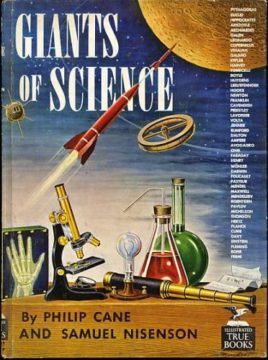 In many ways, the story of my life is the story of books that I have read and loved. Books haven’t just shaped and dictated what I know and think about the world but they have been an emotional anchor, as rock solid as a real ship’s anchor in stormy seas. As the son of two professors with a voracious appetite for reading, it was entirely unsurprising that I acquired a love of reading and knowledge very early on. The Indian city of Pune that I grew up in was sometimes referred to as the “Oxford of the East” for its emphasis on education, museums and libraries, so a love of learning came easy when you grew up there. For 35 years until their mandatory retirement, my parents both taught at Fergusson College in Pune.
In many ways, the story of my life is the story of books that I have read and loved. Books haven’t just shaped and dictated what I know and think about the world but they have been an emotional anchor, as rock solid as a real ship’s anchor in stormy seas. As the son of two professors with a voracious appetite for reading, it was entirely unsurprising that I acquired a love of reading and knowledge very early on. The Indian city of Pune that I grew up in was sometimes referred to as the “Oxford of the East” for its emphasis on education, museums and libraries, so a love of learning came easy when you grew up there. For 35 years until their mandatory retirement, my parents both taught at Fergusson College in Pune.

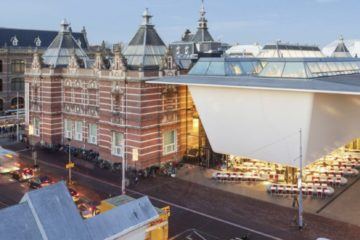 Buildings’ nicknames are the public’s attempt to make sense of the incomprehensible. Several odd-looking London skyscrapers have cheekily illustrative monikers: the Gherkin, the Cheesegrater, the Walkie-Talkie. Angelenos call the mammoth Pacific Design Center the Blue Whale. Beijingites offhandedly refer to the headquarters of China Central Television as Big Underpants. A Shanghai skyscraper with an aperture at the top is the Bottle Opener, and Bilbao has the Artichoke, Frank Gehry’s titanium Guggenheim museum. My favorite is the nickname of an addition to the Stedelijk Museum in Amsterdam—the Bathtub.
Buildings’ nicknames are the public’s attempt to make sense of the incomprehensible. Several odd-looking London skyscrapers have cheekily illustrative monikers: the Gherkin, the Cheesegrater, the Walkie-Talkie. Angelenos call the mammoth Pacific Design Center the Blue Whale. Beijingites offhandedly refer to the headquarters of China Central Television as Big Underpants. A Shanghai skyscraper with an aperture at the top is the Bottle Opener, and Bilbao has the Artichoke, Frank Gehry’s titanium Guggenheim museum. My favorite is the nickname of an addition to the Stedelijk Museum in Amsterdam—the Bathtub. Buy me a drink and I’ll break down for you my new obsession: the abuse documentary. It’s a new genre, it’s everywhere on streaming media, and I’ve watched them all.
Buy me a drink and I’ll break down for you my new obsession: the abuse documentary. It’s a new genre, it’s everywhere on streaming media, and I’ve watched them all. In February, the rover Perseverance arrived on Mars after an almost eight-month journey, tasked with looking for signs of ancient life. Though no firm evidence of life beyond Earth has yet been found, the English language is already full of words to talk about it. The search for life on other planets is part of the science of astrobiology. The prefix astro- is “star” in Latin and Greek and, predictably, appears in astronomy, the study of objects beyond the Earth’s atmosphere.
In February, the rover Perseverance arrived on Mars after an almost eight-month journey, tasked with looking for signs of ancient life. Though no firm evidence of life beyond Earth has yet been found, the English language is already full of words to talk about it. The search for life on other planets is part of the science of astrobiology. The prefix astro- is “star” in Latin and Greek and, predictably, appears in astronomy, the study of objects beyond the Earth’s atmosphere.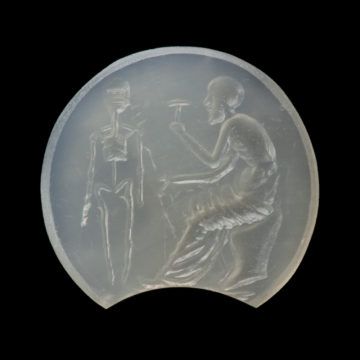 How long have we been imagining artificial life? A remarkable set of ancient Greek myths and art shows that more than 2,500 years ago, people envisioned how one might fabricate automatons and self-moving devices, long before the technology existed. Essentially some of the earliest-ever science fictions, these myths imagined making life through what could be called biotechne, from the Greek words for life (bio) and craft (techne). Stories about the bronze automaton Talos, the artificial woman Pandora, and other animated beings allowed people of antiquity to ponder what awesome results might be achieved if only one possessed divine craftsmanship. One of the most compelling examples of an ancient biotechne myth is Prometheus’ construction of the first humans.
How long have we been imagining artificial life? A remarkable set of ancient Greek myths and art shows that more than 2,500 years ago, people envisioned how one might fabricate automatons and self-moving devices, long before the technology existed. Essentially some of the earliest-ever science fictions, these myths imagined making life through what could be called biotechne, from the Greek words for life (bio) and craft (techne). Stories about the bronze automaton Talos, the artificial woman Pandora, and other animated beings allowed people of antiquity to ponder what awesome results might be achieved if only one possessed divine craftsmanship. One of the most compelling examples of an ancient biotechne myth is Prometheus’ construction of the first humans.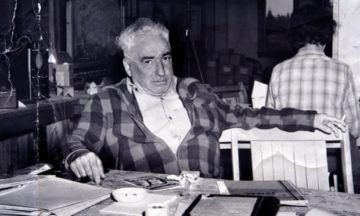 What Reich wanted to understand was the body itself: why you might want to escape or subdue it, why it remains a naked source of power. His wild life draws together aspects of bodily experience that remain intensely relevant now, from illness to sex, anti-fascist direct action to incarceration. The writer and civil rights activist
What Reich wanted to understand was the body itself: why you might want to escape or subdue it, why it remains a naked source of power. His wild life draws together aspects of bodily experience that remain intensely relevant now, from illness to sex, anti-fascist direct action to incarceration. The writer and civil rights activist  The curtain rises on a dim, drab room. An alarm sounds, and a woman wakes. She tries to rouse her sleeping child and husband, calling out: “Get up!”
The curtain rises on a dim, drab room. An alarm sounds, and a woman wakes. She tries to rouse her sleeping child and husband, calling out: “Get up!”
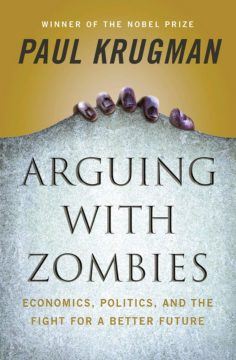 Adam Tooze in the LRB:
Adam Tooze in the LRB: